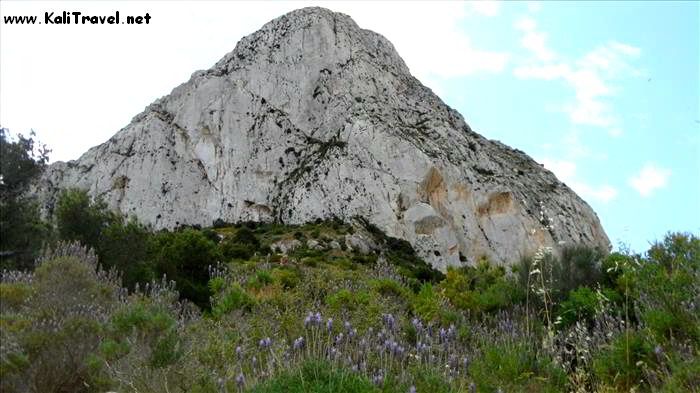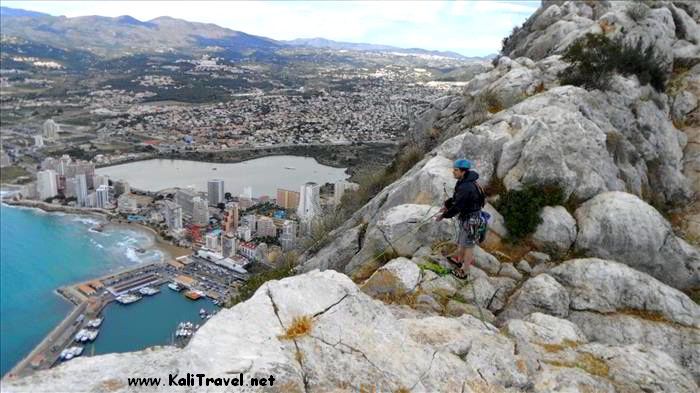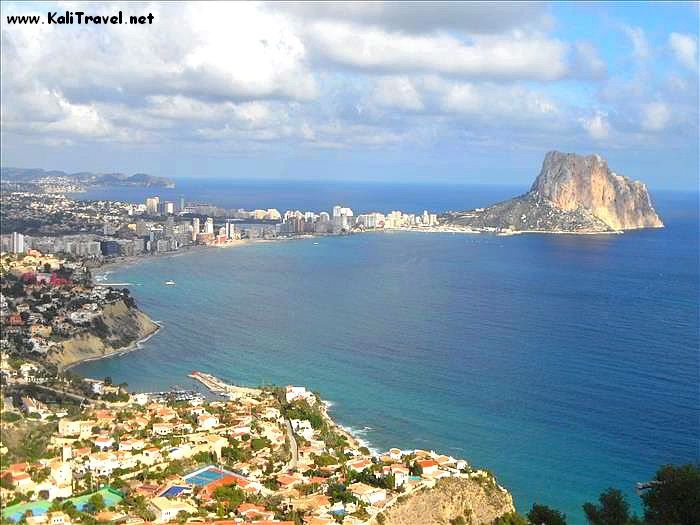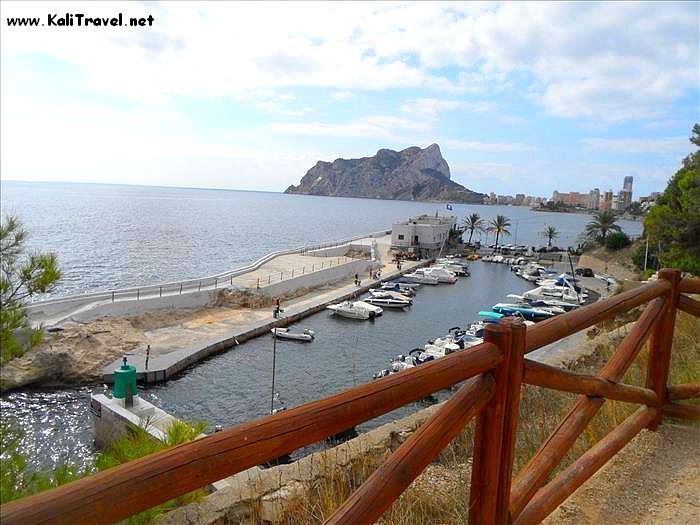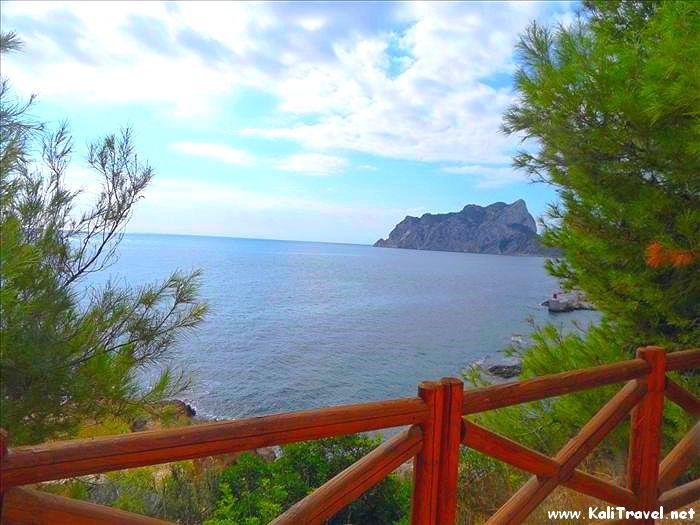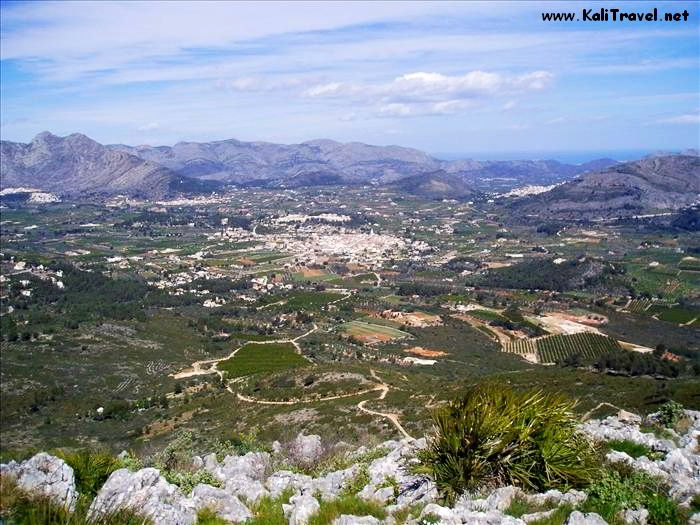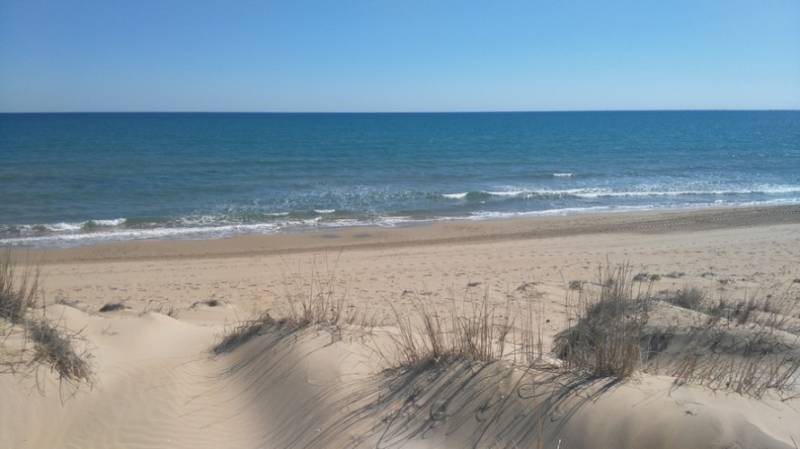Discover what to see in Calpe, Spain.
Calpe is a popular seaside town on Spain’s Costa Blanca, with fine sand beaches, a historical old town, Roman ruins and the landmark Peñon de Ifach ‘rock’ which rises from the Mediterranean Sea.
Locally known as Calp, this is the ideal resort for a relaxing getaway or a family holiday in the sunshine. Calpe also makes a great day out if you live in Alicante or Valencia provinces, or are vacationing nearby.
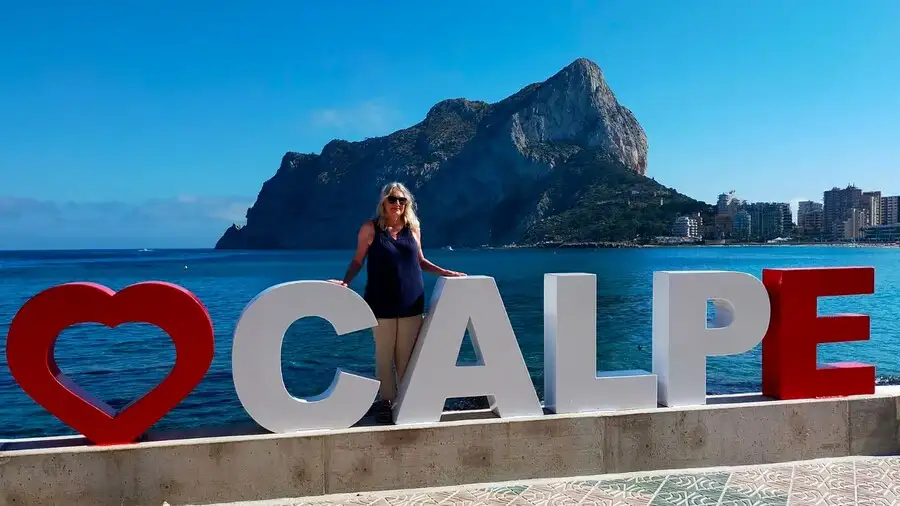
What to See in Calpe, Spain
Calpe bay stretches along 13 kilometres of scenic Costa Blanca coastline, fringed with sandy blue-flag beaches, several pebble coves (some only accessible on foot or by sea) and the transparent blue Mediterranean Sea.
It’s the sort of place where there’s always something to discover, no matter how many times you’ve been here. I should know, we only live a few kilometres away. So, here’s my latest guide on Calpe in Spain, what to see and do in a beach town blessed with natural beauty and some cool historic sites. Read on to gather ideas for your holiday or day trips.
Peñón de Ifach (Calpe Rock)
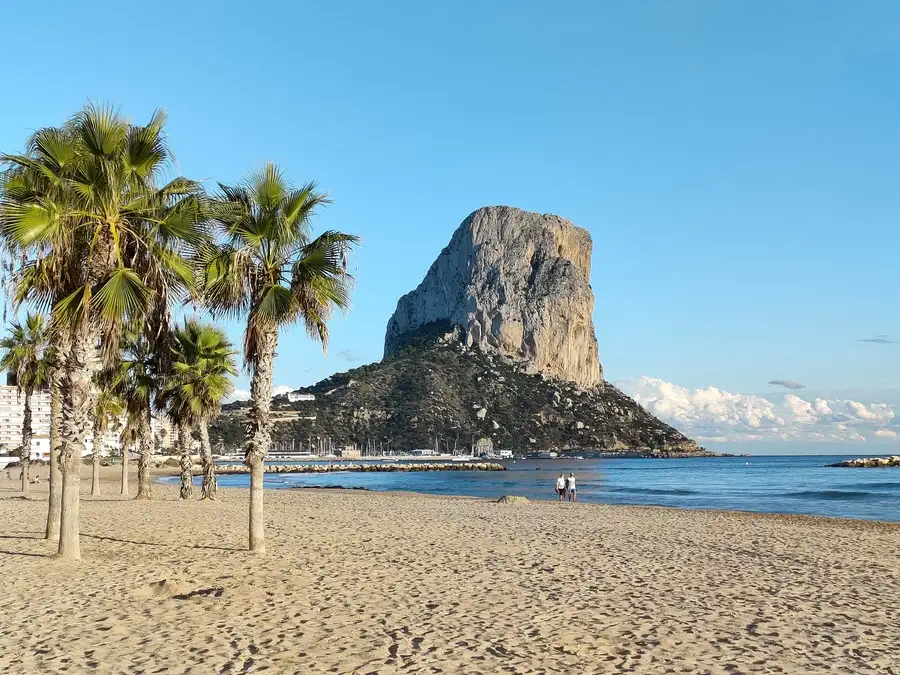
The first thing you’ll see in Calpe is the Peñón de Ifach mastiff, which rises out of the sea by Calpe fishing port to a height of 332 metres. It’s a unique sight which can be seen from everywhere in town and, not surprisingly, from miles away!
‘Calpe Rock’, as it is commonly known in English, visually splits the township into two parts either side of the fishing harbour – to the east is La Fossa Beach and promenade where you’ll find some of the larger hotels; to the west, the seaview boulevard which borders Roman ruins and along Arenal-Bol Beach, to the town centre. From here it’s uphill to Calpe’s old quarter.
Peñon de Ifach is a protected natural park with a variety of Mediterranean flora, wild birds and marine life. While falcons, cormorants and gulls nest in the rockface, dolphins swim in the waters below.
There is a nature trail across the kilometre wide limestone rock and a strenuous walk to the top where you’ll be rewarded with spectacular views across the bay, with Benidorm skyline in the far distance. The summit hike takes around 3 hours, there and back. Wear non-slip walking shoes as the rocks are slippery, and bring a bottle of water.
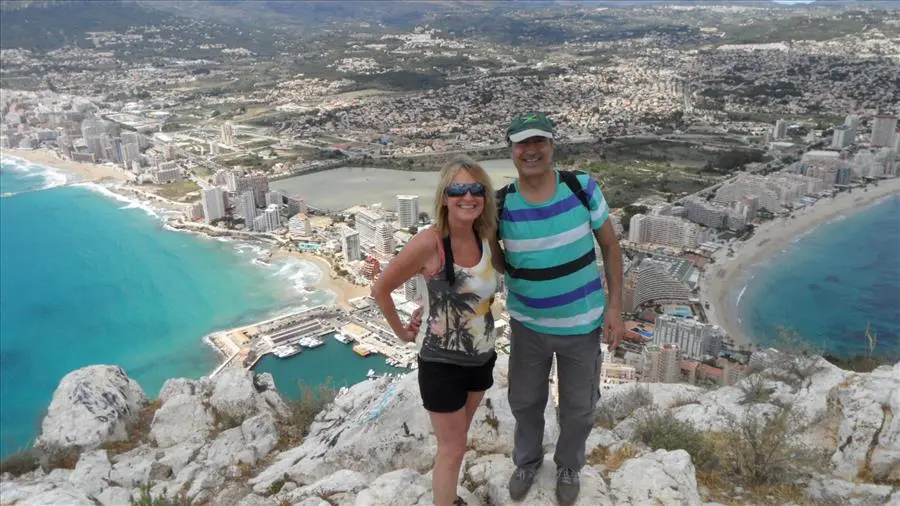
The sheer cliff face which drops to the sea is popular with experienced rock climbers. Meanwhile, scuba divers love exploring the depths of the ocean below.
Related Posts:
* Costa Blanca Walks & Mountain Hikes >>>
* Scuba Diving & Snorkeling on Costa Blanca >>>
Entrance to Peñon de Ifach Nature Reserve is free of charge but limited to 300 persons per day. Either prebook online at the official site (in Spanish with English instructions), pop along to Calpe Tourist Bureau, or go directly to the Ifach Information Centre at the park entrance. Not recommended for children.
Calpe Fishing Port and Leisure Harbour
Calpe fishing port, leisure harbour and the Royal Yacht Club are at the foot of the Peñon de Ifach.
Apart from nautical activities, this is the place to enjoy reasonably priced seafood menus at Calpe’s popular quayside restaurants. Delicacies include king prawn, lobster, octopus, squid, red mullet, gilt-head bream, and whiting. Paellas are another specialty.
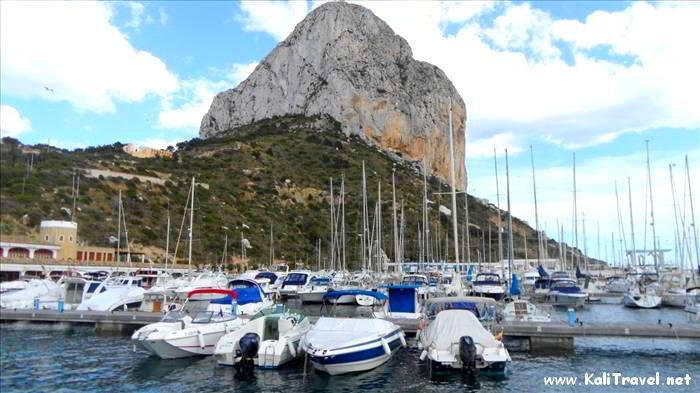
Come along late afternoon, as the trawlers come home from sea, if you want to buy some freshly caught local fish. Calpe Fish Market is the long white building beside the port with a little fishmonger’s shop out front. A fish auction is held inside the ‘lonja’ on weekdays, starting at 5pm. Visitors can watch from a raised walkway, as fish traders and restaurateurs bid for the day’s catch!
Calpe Old Town
Walk up steep Avenida Gabriel Miró ‘main street’ at the end of Arenal-Bol beach, and you’ll arrive at the local Town Hall. Turn left into a maze of little streets and alleyways to enter Calpe old town.
Contrary to what you’d think, Calpe’s historic centre is not near fishing port. Originally, folk built their homes on the hillside overlooking the coast. In Medieval times the village was fortified with stone walls. From this elevated position, the people of Calpe could keep a look out for the Barbary pirates who crossed the Mediterranean to raid Costa Blanca.
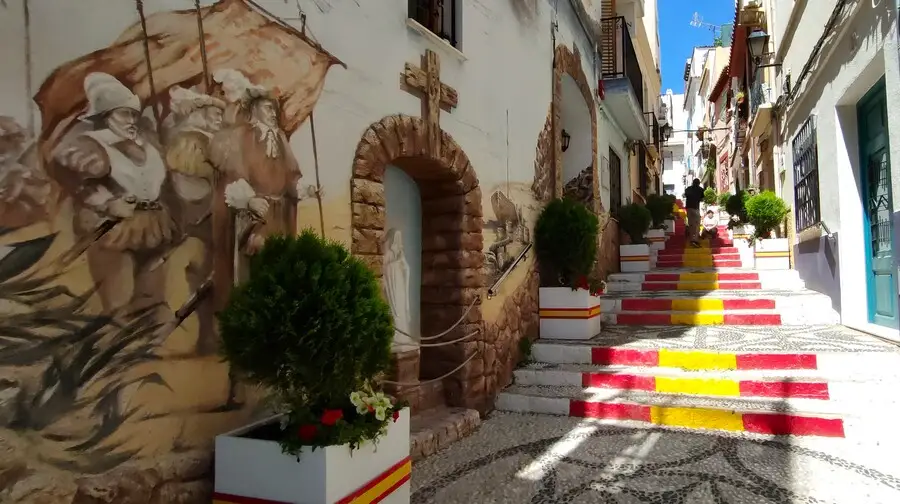
Nowadays, the historic quarter is hidden among newer buildings, but definitely worth seeing. A walking route through the network of narrow streets is marked with plaques, which guides you up stairways and through passages into the heart of medieval Calpe.
You’ll see part of the defensive walls beside Torreó de la Peça, the landmark tower which dates to the XV century. Two cannons beside the flower beds were originally sited by the harbour. The bell tower belongs to Calpe’s Gothic church, which backs onto an ancient square. This a good place to take pics, or to stop for lunch at a restaurant terrace.
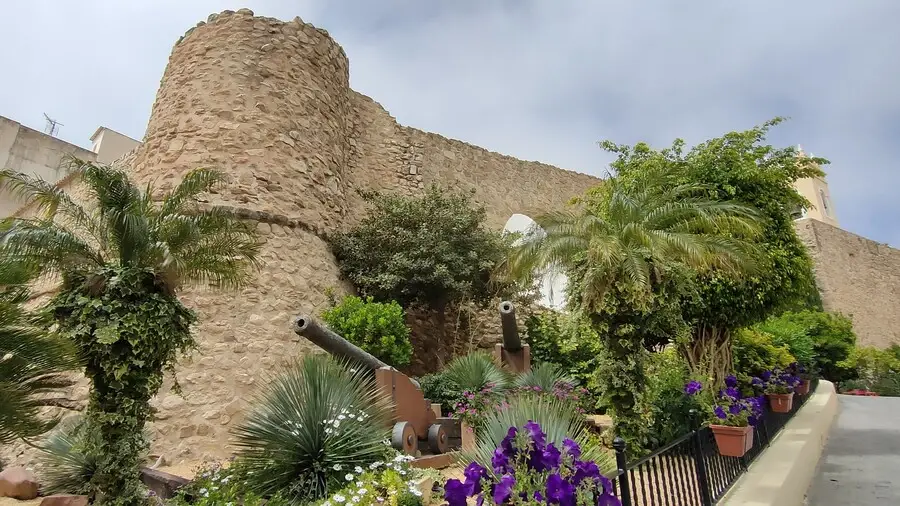
Follow the cobbled path through the archway, past ‘Museo de Coleccionismo’ museum and more cute eateries, to ‘Plaça de la Villa’ the new church square. Nuestra Señora de las Nieves was built in 1975. Inside the mosaic façade with stained glass windows you’ll find the door to the mediaeval church, which is used as a chapel. The high vaulted nave is windowless, designed as a refuge for townsfolk when Calpe was attacked in those olden days.
Calpe Beaches
Fabulous fine golden sand beaches lay either side of the Peñon de Ifach (the main beaches have facilities for wheelchair users during the summer months).
La Fossa Beach
Levante beach (La Fossa) lies to the east of the Peñon de Ifach.
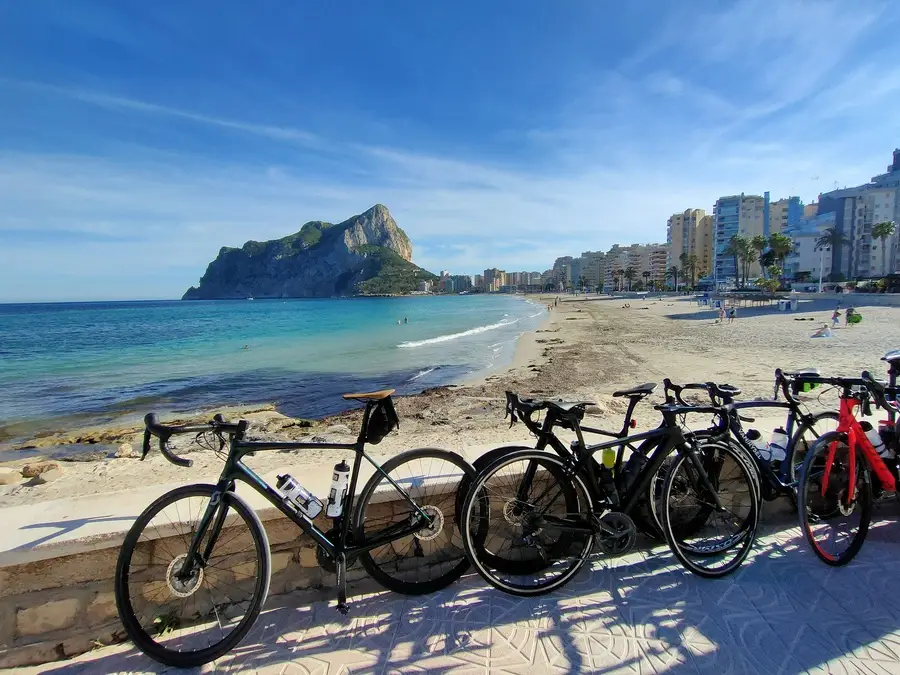
Attractive, wide and sandy, Calpe’s Levante beach has a lively promenade where you’ll find a number of modern seafront hotels.
There’s a wide choice of restaurants serving international and Mediterranean cuisine, as well as cafés, ice-cream parlours, cocktail lounges, gift shops and boutiques.
Cala Morelló
Steps lead up from La Fossa beach to the Peñon de Ifach headland. From here it’s a short walk to Calpe harbour. Stroll along the promenade bordering the ancient ‘roman baths’ cut into the sea bed, and you’ll come to a sandy little bay called Cala Morelló.
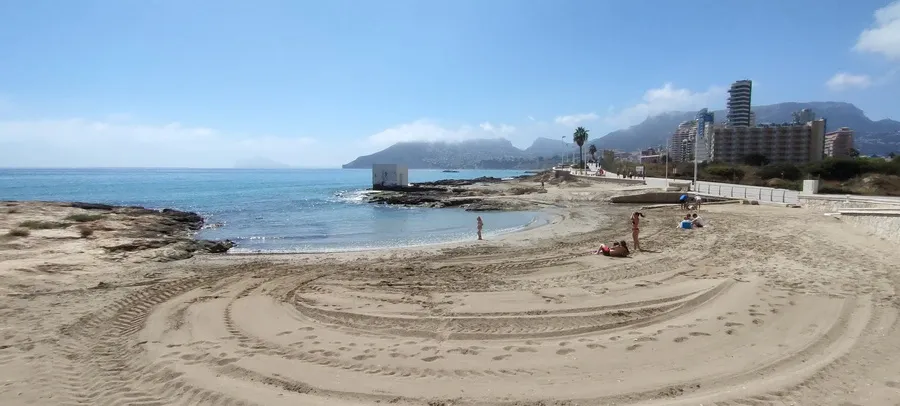
Arenal-Bol Beach
Calpe’s most famous beach, Arenal-Bol beach is located a bit further on, west of Ifach Rock. Over a kilometre of the finest, golden sands is dotted with palm trees and backed by the wide seafront. Once again, this is a child-friendly beach with playing areas and shallow waters. You’ll also find kayaks, stand up paddles, and pedaloes for hire in the summer.
Seafood restaurants and cocktail bars line the promenade, with a variety of eateries offering a choice ‘menu del dia’ (the typically Spanish, reasonably priced, inclusive daily menu).
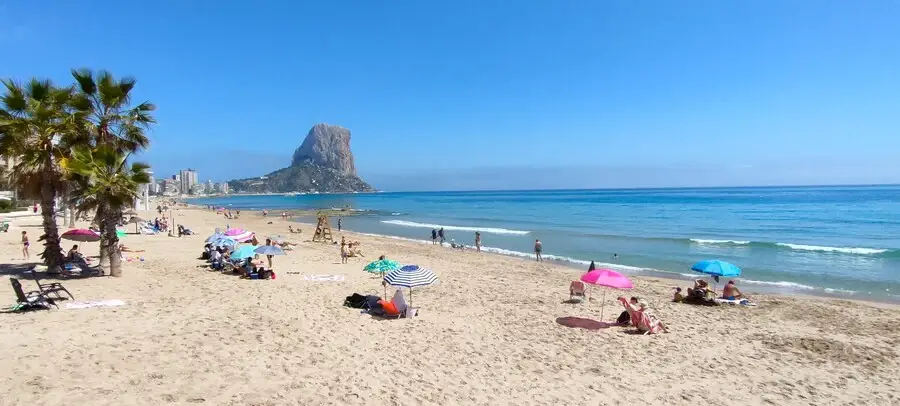
As you can see, Calpe is ideal for families with young children so don’t worry if you’re flying with a baby, the sands are soft and clean, and shady under beach umbrellas.
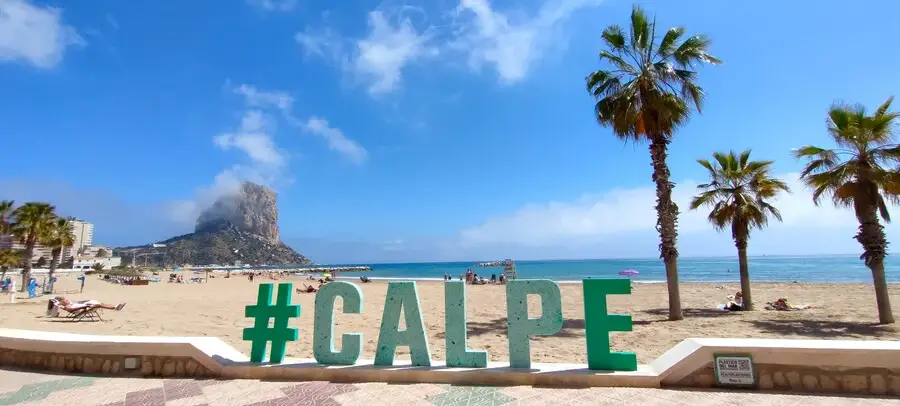
At the southern end of Arenal-Bol seafront you’ll find the main town, where the majority of shops are located. Calpe historic old quarter is hidden away towards the top of the hill, as I mentioned previously.
Puerto Blanco Beach
Puerto Blanco beach is located to the west of Calpe. It’s a lovely sheltered cove with sand and pebbles, which is reached by winding down a succession of residential streets.
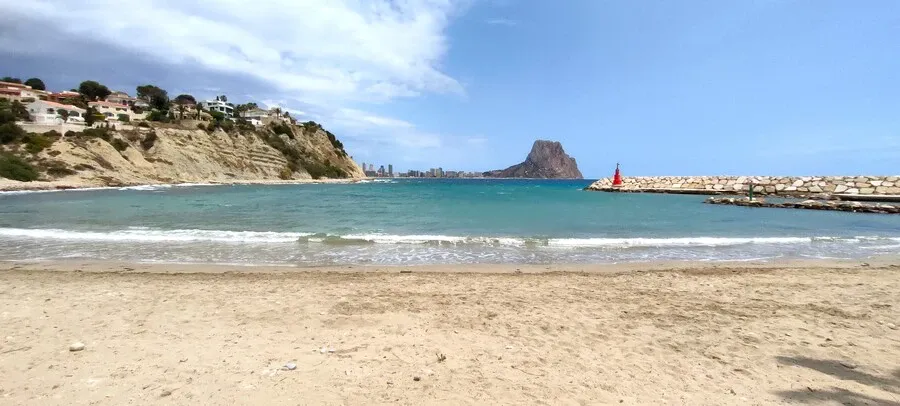
The adjacent ‘ghost harbour’, Puerto Blanco was a lively leisure harbour, once equipped with a diving centre and waterfront restaurants. Unfortunately, the little port was closed to navigation after a breakwater was washed away. While there are plans to convert this into a boutique marina, at the moment Puerto Blanco is totally abandoned.
A little further back in a beautiful setting, Restaurante Puerto Blanco is one of the best restaurants in Calpe for fine dining.
From here, you can walk over the cliffs to the secluded sandy cove at Cala Les Urques. This is Calpe’s designated dog beach.
Finally, Cala Gasparet is nestled under the sheer cliffs of Morro de Toix and can only be reached by boat.
Morro de Toix
The views from Morro de Toix, where the Sierra Bernia mountain ends beside the Mediterranean sea to the west of Calpe, are spectacular.
It’s a steep walk but easy walk to the mirador and round the headland, to see the vistas to Mascaret Marina and Altea.
Morro de Toix headland is one of the most popular places for expert paragliders on the Costa Blanca and it’s fascinating to watch them gently take off over the sea.
Related Post: Tandem Paragliding on the Costa Blanca >>>
Les Bassetes Cove and Leisure Harbour
Located to the east of Calpe, Cala Les Bassetes cove has a pebble and sand beach, sheltered by cliffs. The shore is mainly rock ledge which dips gradually into the clear sea. At the far end, a quay leads onto the small and narrow Les Bassetes leisure harbour, where there’s a Nautical Club with a sailing school and dive centre, and two excellent restaurants with full seaviews.
Restaurante Coral Beach is famed for award winning tapas, as well as paellas and fresh Calpe fish. It has a laidback ambience with a quayside terrace. With a totally separate entrance above, the Oceana Club Restaurant and Cocktail Lounge is peacefully select with a panoramic deck and upscale cuisine.
Metal rungs hang down the side of a small breakwater which acts as an open sea pool where kids, and adults, will be splashing about in summertime. There’s also a kiosk to hire stand-up-paddles, kayaks, windsurfs and even catamarans.
An ecological coastal walk continues northwards along the cliff towards Benissa and Moraira. You’ll find shady picnic areas, steps down to rocky coves, and more incredible views.
Related Post: Benissa and the Coastal Walk >>>
Historical Sites in Calpe
You’ll notice the intriguing ‘Baños de la Reina’ hewn out of rockbed beside the sea.
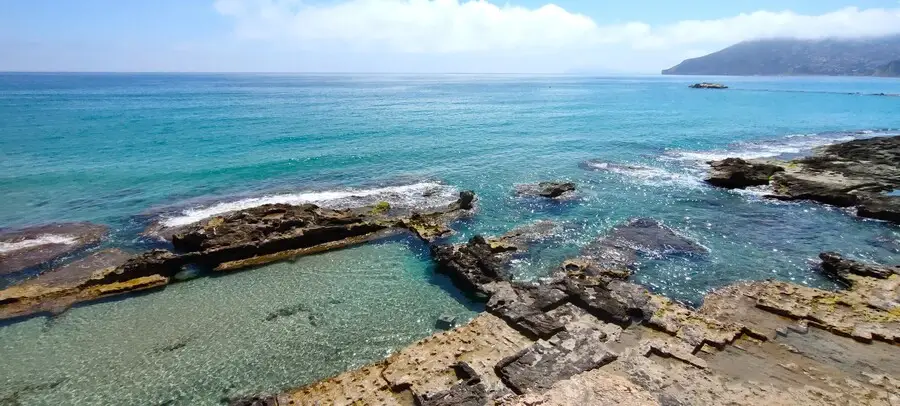
Legend talks of these ‘Roman Baths’, bequeathed to a Moorish Queen… however, research shows that it was actually a Roman fish farm! An adjacent Roman village is party excavated.
Related Post: Archaeological Sites on the Costa Blanca >>>
Las Salinas (Calpe Salt Lake)
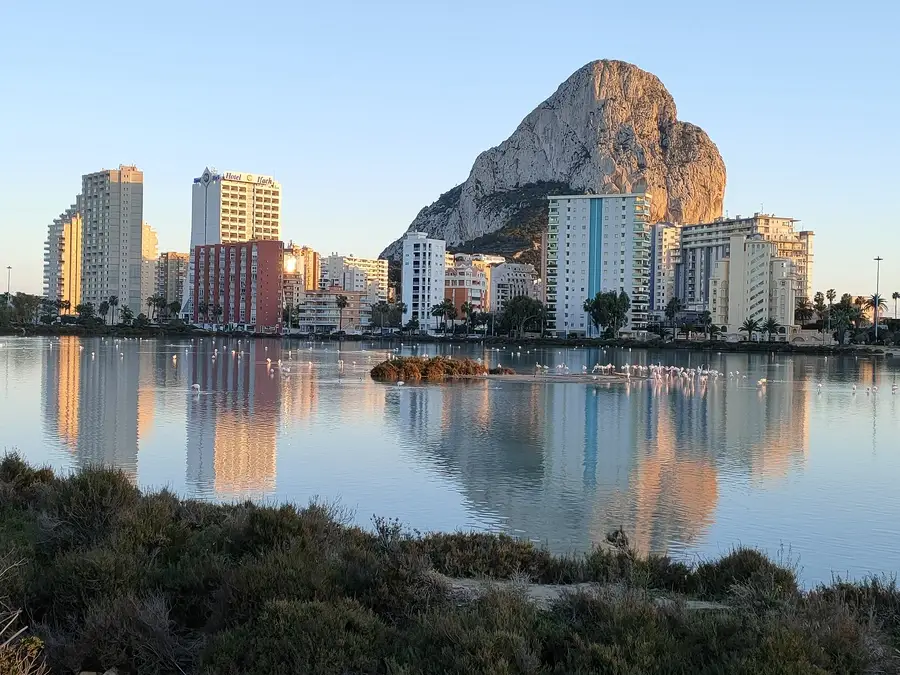
Calpe’s salt lake is a beautiful area of wetlands, and a sancturary to an amazing variety of birds (173 species have been recorded) including flamingos, herons and storks. A circular trail skirts the lake, with lookout points to watch the waterfowl.
Inland from Calpe
Discover the rugged mountains, scenic valleys, vineyards and country villages just inland from Calpe.
Hike around Sierra Bernia, or visit the wineries and traditional markets in Jalón.
Related Post: The Jalón Valley >>>
Tradition and Fiestas in Calpe
Calpe celebrates various festivals throughout the year, including the popular Oktoberfest beer festival, or the colourful Moors and Christians fiestas in October.
60% of Calpe residents are non-Spanish…
Come over on holiday and you may decide to stay forever, like so many people!
How to Get to Calpe
Nearest airport: Altet, Alicante (65kms).
Car hire and taxis are available at the airport, always best to book in advance.
Pre-book private transfer or shuttle service.
By road via A7 motorway or N-332.
Related Posts about the Costa Blanca
Travel Guide to Costa Blanca in Spain
The Costa Blanca is a famous stretch of coast in southeastern Spain, where a warm Mediterranean Sea bathes an infinite diversity of white sand beaches and pebble bays encircled by distant mountain peaks. Follow me on a journey down the coastline, an insider’s guide to the Costa Blanca.
Our related posts on Alicante Province (north to south)
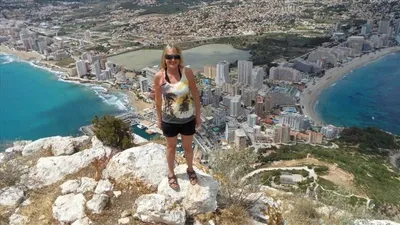
- Dénia
- Ondara
- Moraira
- Benissa
- Calpe
- Jalón Valley
- Altea
- Alfaz de Pi and El Albir
- La Nucía
- Polop de la Marina
- Guadalest Valley – Guadalest village and reservoir walk
- Guadalest Valley – Benimantell, Beniarda, Benifato, Abdet, Confrides
- Benidorm
- Finestrat Village and Cala Finestrat Beach
- Finestrat Mountain Walk: Puig Campana
- Villajoyosa
- El Campello
- San Juan beach
- Alicante
- Tabarca Island
- Torrevieja
- Rojales
- Pilar de La Horadada
Discover the World with![]() the blog with a focus on independent travel
the blog with a focus on independent travel




